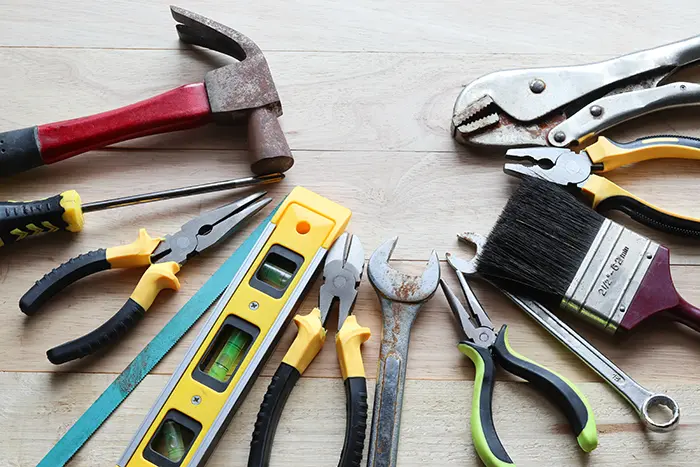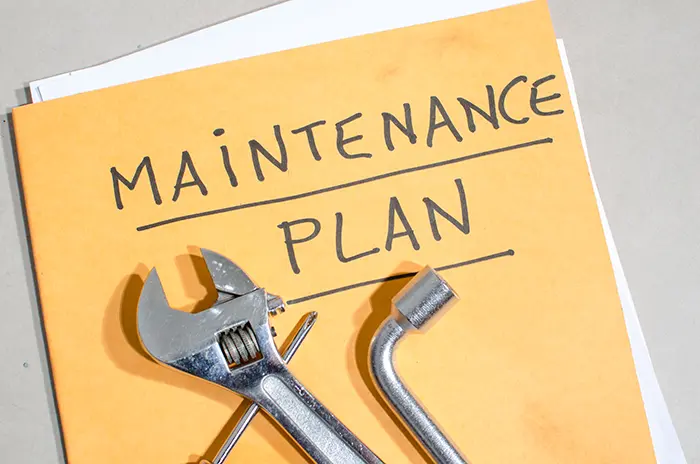The 3 30 300 rule offers a simple yet powerful framework for guiding preventive maintenance in facility and property management. By applying this rule, HOAs and facility teams can more effectively allocate resources and prevent minor issues from escalating into costly repairs.
What is the 3 30 300 Rule in Maintenance?
The 3-30-300 rule helps maintenance teams prioritize interventions based on cost thresholds: $3 for routine checks, $30 for monthly tasks, and $300 for annual investments. This layered approach ensures that maintenance activities remain cost‑effective and timely.
Why it matters: When teams understand that a $3 fix now can avoid a $300 replacement later, it encourages early detection and routine service checks.
Key components:
- Tier 1 – $3 fixes: Minor tasks like tightening screws, lubricating hinges, or caulking small gaps.
- Tier 2 – $30 tasks: Monthly inspections of HVAC filters, electrical wiring spots, or door seals.
- Tier 3 – $300 investments: Yearly upkeep such as roof inspections, gutter cleaning, and major equipment tune‑ups.
Aligning Preventive Maintenance with the 3 30 300 Rule
Integrating the 3-30-300 rule into preventive maintenance transforms schedules and budgeting. Maintenance coordinators should categorize tasks clearly so that low-cost cleanups or adjustments don’t get overlooked in favor of high-cost work.
How to implement:
- Inventory tasks and assign them to tiered lists reflecting their approximate cost.
- Establish reminders—e.g., digital alerts for $3 tasks weekly, $30 monthly, and $300 annually.
- Monitor compliance through checklists and performance logs to track timely execution.
By doing this, HOAs and property teams not only reduce emergency repairs but also stretch their budgets by cutting back on reactive spending.
Budget Management and Predictability
A predictable maintenance budget is a cornerstone of responsible HOA governance, and the 3 30 300 rule helps achieve that.
- Financial planning becomes easier because recurring $3 and $30 tasks can be bundled into routine line items. Only the $300-level items require special allocation or reserve draws.
- Cash flow stability improves when the majority of maintenance remains small and steady. That way, the HOA avoids scraping together funds for sudden $300 items.
- Transparency and trust are enhanced when homeowners appreciate that budget forecasts align with actual spending.
Early Detection and Reduced Risk

One of the most powerful impacts of the 3 30 300 rule is its emphasis on early detection through inexpensive tasks.
- Simple actions, such as tightening a loose handrail or cleaning dryer vents—can help ward off accidents, fires, or structural damage.
- Monthly inspections (around $30) identify issues such as air leaks, mold, or water intrusion that can develop into costly structural or health problems later.
- Annual checks (near $300) ensure that long-lead items—such as roofs, chimneys, and electrical panels—stay in good shape.
Enhanced Asset Life and ROI
Assets last longer when they’re cared for consistently—a central benefit of applying the 3 30 300 rule to preventive maintenance.
- A properly lubricated gate or door ($3 task) avoids grinding wear.
- Monthly HVAC tune-ups ($30 task) result in fewer breakdowns and improved energy efficiency.
- Annual roof sealant treatments ($300 task) prevent leaks and structural damage.
Operational Efficiency and Staff Focus
The 3 30 300 rule also clarifies responsibilities and improves staff or vendor coordination.
- Routine lists ensure that $3‑level jobs aren’t overlooked or deferred indefinitely.
- Monthly maintenance blocks provide teams with the space to complete $30 tasks without being interrupted by emergencies.
- Scheduled annual services enable vendor booking, bulk discounts, and an uninterrupted window for thorough inspections.
Data‑Driven Maintenance Insights
By tracking outcomes linked to each cost category, facility managers gather valuable data:
- Frequency of repeats: Do specific $3 fixes turn into recurring $30 tasks or escalate to $300 events?
- Budget accuracy: Are planned maintenance costs matching actuals?
- Performance trends: Which assets require more attention, and which tiers dominate expenses?
Communication and Homeowner Engagement
Clear communication with homeowners builds confidence in the board’s stewardship. The 3‑30‑300 rule offers a handy framework for explanations.
- “We spent $3 to tighten that gate hinge so you’re not tripping over it.”
- “Our monthly $30 HVAC check keeps energy bills down.”
- “This annual $300 gutter cleaning saves us thousands in avoided water damage.”
Scaling with Community Size and Complexity

The beauty of the 3 30 300 rule is its scalability. Whether you manage a small condo building or a large‐scale community:
- For small HOAs, the rule keeps preventative chores from slipping through gaps.
- For larger properties, it structures vendor contracts and schedules in a repeatable, tiered flow.
- For portfolios—including pools, clubhouses, external grounds, and playgrounds—a common framework ensures every asset receives attention appropriate to its replacement cost.
Common Pitfalls And How To Avoid Them
Even proven frameworks need vigilance to work effectively. Avoid these mistakes:
- Cost misclassification: Don’t lump a $25 repair into the wrong tier—use realistic estimates.
- Skipping low-cost tasks: Skipping a $3 fix today could compound into a $300 fix next season.
- No tracking system: If you don’t monitor, you don’t manage. No logs equals no accountability.
Best Practices for Implementation
To successfully adopt the 3 30 300 rule, consider the following steps:
- Review all existing maintenance tasks and assign them a realistic cost estimate. This will help determine whether each task falls into the $3, $30, or $300 category.
- Organize tasks by frequency and urgency, with low-cost fixes happening more often and higher-cost services scheduled annually.
- Develop a calendar that reflects this structure, so staff and vendors stay on track.
- Train your maintenance team or vendors to recognize early signs of wear and tear and prioritize proactive actions based on the tiered structure.
- Track all completed tasks using logs or checklists to ensure accountability and consistency across maintenance efforts.
- Reassess the list and cost categories annually to account for asset aging, usage trends, and price fluctuations.
Sustaining Safer, Smarter Communities
The 3‑30‑300 rule delivers on its promise: small, regular efforts yield big preventive maintenance payoffs. By integrating this rule, HOA boards and facility managers can reduce costs, enhance asset longevity, and increase homeowner trust—all while maintaining safer and smarter communities.
Maintenance Specialists Inc. offers a wide range of commercial property maintenance services. Call us now at 704.405.6000 or contact us online for more details!
Related Articles:

